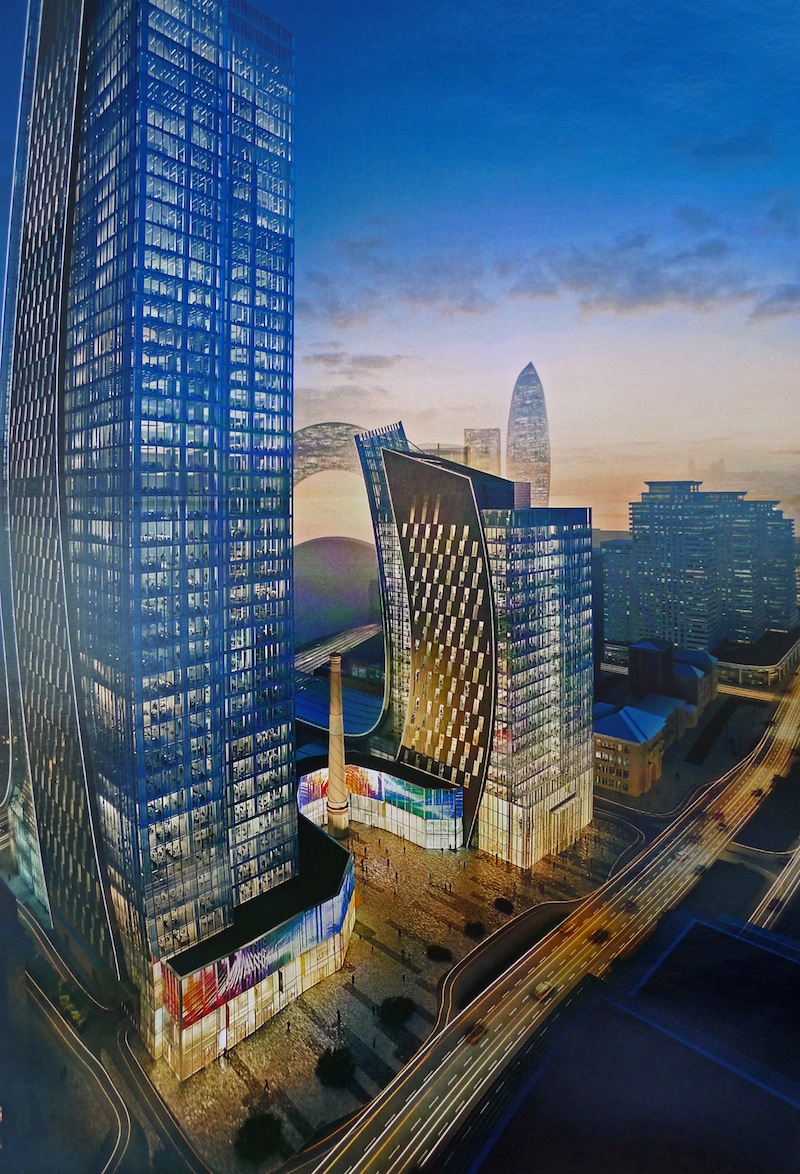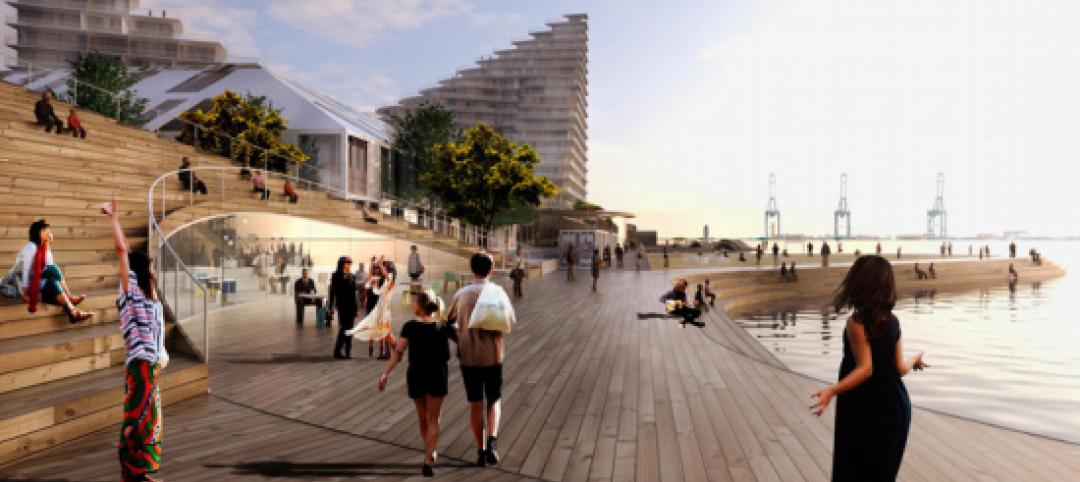A historic but fragile chimney, built in Baku, Azerbaijan’s capital, in 1900, is being preserved to be a central point of a multimillion-dollar shopping complex.
The (unnamed) developer of this shopping center, which is called the Twin Towers of Port Baku, originally had planned to demolish the chimney. That’s before Azerbaijan’s president, Ilham Aliyev, intervened and requested that the chimney be restored instead.
It’s not clear what the historical significance of this chimney is other than its age. But now it will stand between two office buildings that, at 14 and 32 stories respectively, will overlook the Caspian Sea when they and shopping center are completed sometime in 2017.
Based on the renderings, the shopping mall portion will curve around the chimney and connect the two office buildings.
Azerbaijan sees this regeneration project as a way to establish Baku as a center for commerce and technology. Cintec International, an engineering firm based in Newport, Wales, which specializes in structural masonry retrofits, is commissioned to restore the chimney.
This chimney project, which started in September, is estimated to take 12 weeks to complete and cost £1 million (US$1.5 million). It requires securing the chimney—which based on photos appeared to be listing—by drilling into it from the top and feeding 24 meters (78 feet) of anchors into the structure.
Because the circular chimney is so delicate, Cintec had to design thinner connecting anchors for this project, and use laser keyhole technology in order to position the anchors internally.
“What we’re doing is surgical engineering, so it’s very precise,” said Peter James, Cintec’s managing director.

 Chimney before renovations.
Chimney before renovations.
Related Stories
| Oct 27, 2014
Report estimates 1.2 million people experience LEED-certified retail centers daily
The "LEED In Motion: Retail" report includes USGBC’s conceptualization of the future of retail, emphasizing the economic and social benefit of green building for retailers of all sizes and types.
| Oct 16, 2014
Perkins+Will white paper examines alternatives to flame retardant building materials
The white paper includes a list of 193 flame retardants, including 29 discovered in building and household products, 50 found in the indoor environment, and 33 in human blood, milk, and tissues.
| Oct 15, 2014
Harvard launches ‘design-centric’ center for green buildings and cities
The impetus behind Harvard's Center for Green Buildings and Cities is what the design school’s dean, Mohsen Mostafavi, describes as a “rapidly urbanizing global economy,” in which cities are building new structures “on a massive scale.”
| Oct 12, 2014
AIA 2030 commitment: Five years on, are we any closer to net-zero?
This year marks the fifth anniversary of the American Institute of Architects’ effort to have architecture firms voluntarily pledge net-zero energy design for all their buildings by 2030.
| Sep 25, 2014
Bjarke Ingels headed home for latest project: Aarhus Island
Aarhus Island will be a waterside development in Denmark's second-largest city. The mixed-use development will implement Ingels' signature angled look in its residential towers.
| Sep 24, 2014
Architecture billings see continued strength, led by institutional sector
On the heels of recording its strongest pace of growth since 2007, there continues to be an increasing level of demand for design services signaled in the latest Architecture Billings Index.
| Sep 22, 2014
4 keys to effective post-occupancy evaluations
Perkins+Will's Janice Barnes covers the four steps that designers should take to create POEs that provide design direction and measure design effectiveness.
| Sep 22, 2014
Sound selections: 12 great choices for ceilings and acoustical walls
From metal mesh panels to concealed-suspension ceilings, here's our roundup of the latest acoustical ceiling and wall products.
| Sep 15, 2014
Ranked: Top international AEC firms [2014 Giants 300 Report]
Parsons Brinckerhoff, Gensler, and Jacobs top BD+C's rankings of U.S.-based design and construction firms with the most revenue from international projects, as reported in the 2014 Giants 300 Report.
| Sep 9, 2014
Using Facebook to transform workplace design
As part of our ongoing studies of how building design influences human behavior in today’s social media-driven world, HOK’s workplace strategists had an idea: Leverage the power of social media to collect data about how people feel about their workplaces and the type of spaces they need to succeed.















